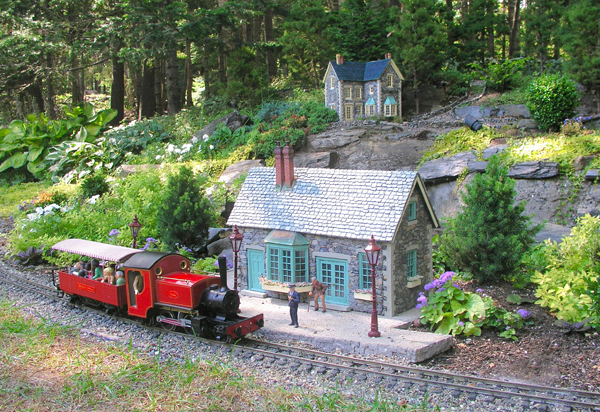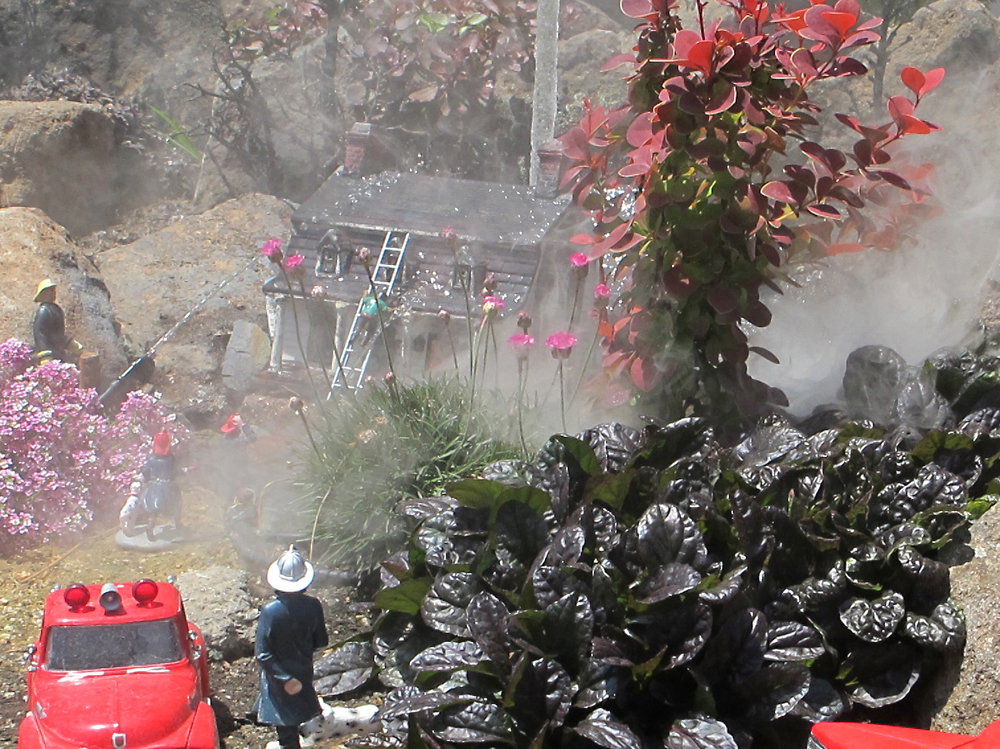Cape Elizabeth, Maine, Zone 5
Concrete strong
Sixteen years ago or so I built a layout that loops atop a mound of rock in the center of our backyard. I was agile then, but still had difficulty reaching tracks above a pond. Now, with my 75th birthday rapidly approaching, only my grandkids can reach that track. Last summer I decided to build a point-to-point line at the base of the mound along the grass that runs beside the pond. But floating a track on ballast — the way most of us build our garden railway — wouldn’t work, because I couldn’t hose grass clippings off the rails without washing off the gravel. I decided instead to pour a concrete roadbed.
Using six-foot lengths of flexible landscape edging (sold as “paver restraint” at Lowes), I formed the sides. I made a channel between the pavers, 5″ wide, in which to pour the concrete. The form thus made is not more than 3-4″ deep, well above the frost line here in Maine. Surprisingly, the base has shown no damage from frost heave.
On top of the concrete I glued sifted pebbles from a nearby beach, using GE Silicone II glue. One tube will cover five to seven feet of track. I pressed the pebbles into the glue with a foam paint roller. To keep the track aligned, I glued it to the ballast. The silicone flexes just enough to keep the track from buckling in the summer heat. Once glued in place, the ballast and the track stay put when grandkids play or when I wash the track. So successful has this technique been that next summer (if my knees hold out) I plan to use it to replace the original loop around the rocky mound.















Very interesting. Might have to give this a try. One and done!
interesting. guess the same could be done with 7mm gravel but into the wet concrete…… I might try that…
Thank you!